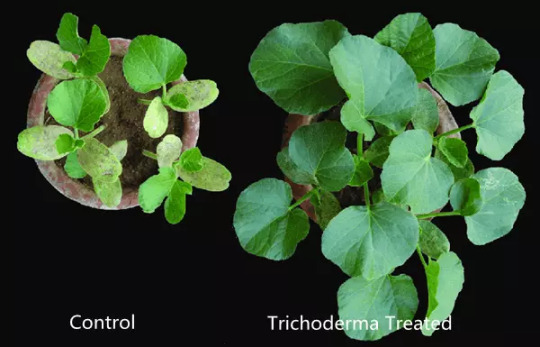Text
Managing Sclerotinia Stem Rot in Canola: A Comprehensive Guide

Introduction
Significance of Managing Sclerotinia Stem Rot
Sclerotinia stem rot, caused by the fungus Sclerotinia sclerotiorum, poses a significant threat to canola production worldwide. This destructive disease can lead to yield losses of up to 50%, making effective management strategies essential for maintaining crop health and productivity.
Role of Trichoderma Harzianum in Disease Management
Trichoderma Harzianum, a beneficial soil fungus, has emerged as a promising tool for combating sclerotinia stem rot in canola fields. Its ability to suppress pathogen growth and enhance plant defense mechanisms offers a sustainable alternative to traditional fungicides.
Understanding Sclerotinia Stem Rot
Overview of Sclerotinia Stem Rot Disease
Sclerotinia stem rot primarily affects canola plants during flowering and podding stages, causing white mold growth on stems, leaves, and pods. The disease progresses rapidly under cool, moist conditions, leading to wilting, lodging, and ultimately, yield loss.
Impact on Canola Crops
The economic impact of sclerotinia stem rot extends beyond yield losses to include reduced seed quality and increased production costs associated with fungicide applications. Timely and effective disease management is critical to mitigating these losses.
Causes and Symptoms
Factors Contributing to Sclerotinia Stem Rot
Sclerotinia sclerotiorum, the causal agent of sclerotinia stem rot, produces hardy survival structures called sclerotia, which can persist in soil for several years. Environmental conditions conducive to fungal development, such as cool temperatures and high humidity, promote disease incidence.
Visual Symptoms in Canola Crops
Early symptoms of sclerotinia stem rot include water-soaked lesions on stems and petioles, which later develop into white, cottony mycelium. As the disease progresses, affected tissues become necrotic, leading to stem girdling and plant death.
Management Strategies
Cultural Practices for Disease Prevention
Implementing cultural practices such as crop rotation, tillage, and planting resistant varieties can help reduce sclerotinia stem rot pressure in canola fields. Adequate plant spacing and canopy management promote airflow and reduce humidity, creating less favorable conditions for fungal development.
Chemical Control Options
Fungicides are commonly used to manage sclerotinia stem rot in canola crops, with products containing boscalid, iprodione, or fluazinam among the most effective. However, frequent applications and concerns about fungicide resistance highlight the need for alternative control measures.
Biological Control with Trichoderma Harzianum
Trichoderma Harzianum offers a sustainable and environmentally friendly approach to sclerotinia stem rot management. As a natural antagonist of Sclerotinia sclerotiorum, it colonizes plant roots and suppresses pathogen growth through competition and production of antifungal compounds.
Integrated Pest Management Approaches
Integrated pest management (IPM) strategies that combine cultural, chemical, and biological control methods offer the most effective and sustainable approach to managing sclerotinia stem rot in canola. By integrating multiple tactics, growers can minimize disease pressure while reducing reliance on fungicides.
Trichoderma Harzianum: A Sustainable Solution
Introduction to Trichoderma Harzianum
Trichoderma Harzianum is a naturally occurring soil fungus known for its biocontrol properties against various plant pathogens, including Sclerotinia sclerotiorum. Its ability to colonize plant roots and produce enzymes that degrade fungal cell walls make it an effective antagonist.
Mechanism of Action Against Sclerotinia
Trichoderma Harzianum exerts its antifungal activity through multiple mechanisms, including parasitism, antibiosis, and induction of plant defense responses. By outcompeting Sclerotinia sclerotiorum for nutrients and space, it inhibits fungal growth and suppresses disease development.
Field Efficacy and Research Findings
Numerous field trials and research studies have demonstrated the efficacy of Trichoderma Harzianum in managing sclerotinia stem rot in canola. Its ability to reduce disease incidence, increase yield, and improve crop quality underscores its potential as a sustainable disease management tool.
Benefits for Canola Growers
Canola growers stand to benefit significantly from incorporating Trichoderma Harzianum into their disease management programs. Not only does it offer effective control against sclerotinia stem rot, but it also promotes soil health, enhances nutrient uptake, and reduces reliance on chemical inputs.
Application Methods
Seed Treatment
Applying Trichoderma Harzianum as a seed treatment ensures early establishment and colonization of plant roots, providing protection against soilborne pathogens such as Sclerotinia sclerotiorum. Seed treatments are convenient and cost-effective, requiring minimal equipment and labor.
Soil Application
Incorporating Trichoderma Harzianum into the soil through granular formulations or irrigation systems promotes widespread root colonization and long-term disease suppression. Soil applications are ideal for managing sclerotinia stem rot in canola fields with a history of disease pressure.
Foliar Spray
Foliar applications of Trichoderma Harzianum can provide additional protection against airborne spores of Sclerotinia sclerotiorum during flowering and podding stages. Spraying the foliage with a suspension of Trichoderma spores enhances leaf colonization and reduces disease severity.
Compatibility with Other Agricultural Inputs
Trichoderma Harzianum is compatible with most agricultural inputs, including fertilizers, herbicides, and insecticides. However, it is essential to avoid tank-mixing with fungicides containing copper or sulfur, as they may inhibit Trichoderma growth and activity.
Case Studies
Success Stories from Canola Farms
Growers who have integrated Trichoderma Harzianum into their disease management programs report significant reductions in sclerotinia stem rot incidence and improved crop yields. Real-world success stories highlight the efficacy and reliability of this sustainable solution.
Testimonials from Growers
"Since incorporating Trichoderma Harzianum into our canola production practices, we've seen a noticeable decrease in sclerotinia stem rot pressure and an increase in overall crop health and yield. It's become an invaluable tool in our fight against this devastating disease." - John Smith, Canola Grower
FAQs
What is sclerotinia stem rot, and how does it affect canola?
How does Trichoderma Harzianum control sclerotinia stem rot?
Is Trichoderma Harzianum safe for use in canola crops?
Can Trichoderma Harzianum be applied with other fungicides?
Where can growers purchase Trichoderma Harzianum products?
What are the long-term benefits of using Trichoderma Harzianum?
Conclusion
In conclusion, managing sclerotinia stem rot in canola requires a multifaceted approach that integrates cultural practices, chemical control, and biological solutions. Trichoderma Harzianum offers a sustainable and effective alternative to traditional fungicides, providing growers with a powerful tool for protecting their crops and ensuring long-term sustainability.
0 notes